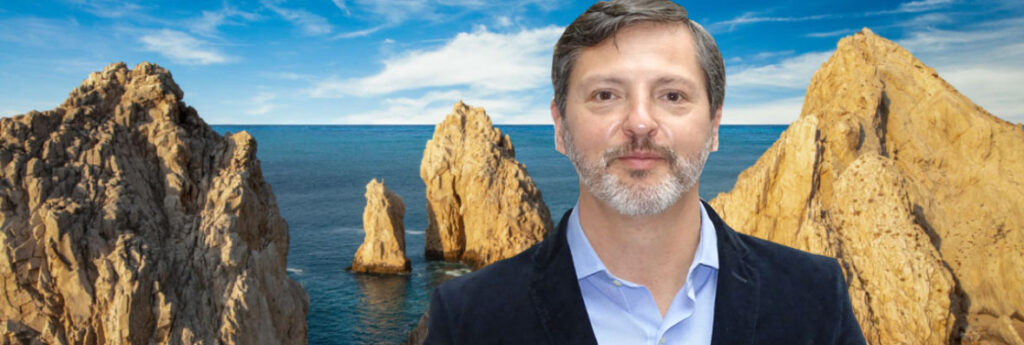Pre-pandemic, Mexico’s Los Cabos welcomed close to 200,000 Canadian visitors a year, which is a certain testament to the west coast destination’s diversity in almost all facets of travel. Indeed, Los Cabos is a veritable chameleon, from its wide-open spaces that run the span from desert sand to salty sea; golf to intimate cultural settings; small boutique properties to big hotels; fine dining to the Wabo Cabo cantina; and activities ranging from peaceful spa treatments to testosterone-fuelled sport fishing; and passive whale watching to active diving/snorkelling.
Indeed, Los Cabos is a veritable chameleon, from its wide-open spaces that run the span from desert sand to salty sea; golf to intimate cultural settings; small boutique properties to big hotels; fine dining to the Wabo Cabo cantina; and activities ranging from peaceful spa treatments to testosterone-fuelled sport fishing; and passive whale watching to active diving/snorkelling.
Rodrigo Esponda, Managing Director of Los Cabos Tourism, says there’s literally something for every market and every visitor in the resort region perched at the tip of the 1,600-long Baha Peninsula, including couples (romance and weddings), friends (groups), and families. He notes that many Canadians also winter in the destination.
Moreover, the destination has a high return rate for visitors, and many discover it on a cruise and come back for a longer stay.
Espondo, who previously served the Mexico Tourism Board in this country, recently made one of his frequent calls to Canada to talk up the latest news in the destination trade, and noted that tourism in the destination had largely recovered from the pandemic by last year.
Canadians will be able actively join in in greater numbers this year with 120,000 airline seats from all the major carriers confirmed in the next six months.
Historically, western Canadians were most likely to visit Los Cabos, centred in Cabo San Lucas (or Cabo), but eastern interest was on the rise pre-pandemic as well.
Esponda says a focus on safety – both from the pandemic and otherwise (as other Mexican destinations grapple with violent incidents) – have served Los Cabos well, as does its diversity and distinction from Caribbean competitors.
“The product is very different than the Caribbean,” he says, adding that even cross-country neighbour Quintana Roo (Cancun/Riviera Maya) will open as many hotel rooms in a year as Los Cabos has in total (about 18,000). And while Los Cabos has been on a fast-track for hotel development in recent years, the number of rooms being added are significantly less, many in the exclusive high-end neighbourhood.
Indeed, if two words could be used to describe Los Cabos, they would be “intimate” and “outdoors,” Esponda says, musing that travellers who want to confine themselves to a mass-scale resort or to “party with a thousand people” ought not visit Los Cabos, which beckons with its spectacular coastline and beautiful beaches along the Pacific Ocean and Sea of Cortez, sweeping desert dunes, a growing list of championship golf courses, and traditional Mexican towns, such as San José, where tacos and tequila rule.
Being an outdoor destination, local authorities are especially invested in sustainability, Esponda notes, pointing out that 42% of Los Cabos’ total territory is designated as a Protected Natural Area (including local reefs), and that the destination’s efforts now extend far beyond ecological preservation.
To that end, and with travellers trending towards visiting less-crowded destinations that can offer authentic, sustainable experiences, Los Cabos, says Esponda, is an ideal destination to be put on any client’s radar.

